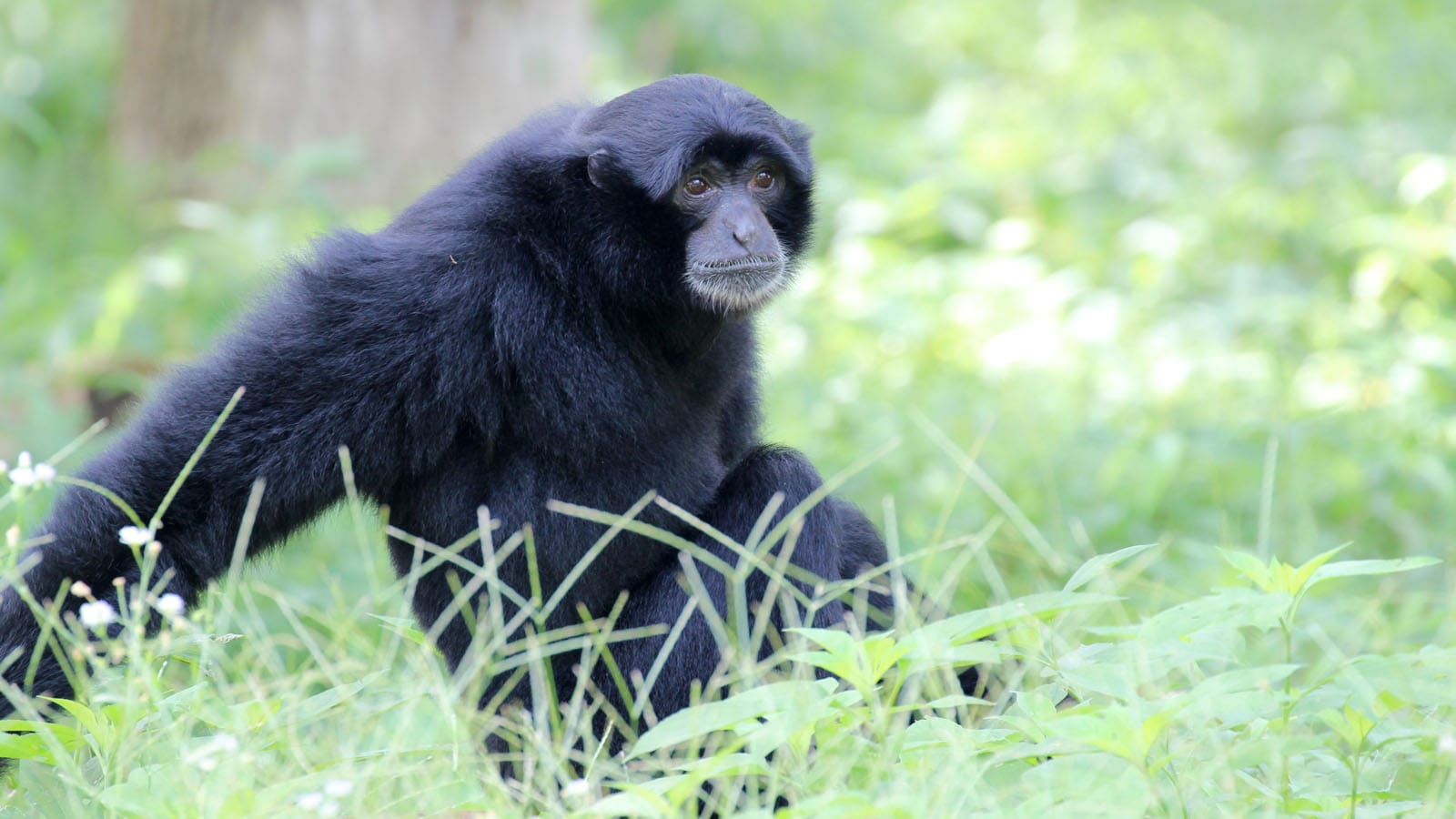Palm Oil And Siamangs
. The siamang’s mesmerizing morning chorus is usually composed of duets between males and females. The great gibbon is also known for its astounding gymnastic abilities, a form of movement called brachiating.
The majority of the world’s remaining endangered siamangs are found in Sumatra, the epicenter for deforestation in Asia.The open-air truck braked to a halt and we jumped down, rushing out onto the road. Our guide beckoned us to move quickly, but quietly. In the dense canopy of the Sumatran jungle, a large male ape boomed, it’s urgent hooting almost deafening.The smaller female and juvenile had already fled the approach of our vehicle, but the male stayed back to distract us – according to our guide – as the others fled to safety. We rushed into the pathless forest, crashing through a tangle of jabbing, slashing, spiny branches, struggling with cameras and binoculars.We stopped and tilted our gaze up, way up.The giant gibbon – the siamang – peered down at us, still howling. His massive throat-sac bulged. We watched for several minutes as he used long, lean and super-strong arms to fling himself through the canopy with athletic abandon, stopping periodically to shake the branches and stare down at us with a steely gaze that said, “Yes, I see you, intruders – and I’m not afraid.” Rarely caught on the ground in the wild, this zoo-kept siamang enjoys a favorite fruit. Siamangs are prodigious seed dispersers, assuring their preferred fruit trees are widespread – a strategy that benefits the great gibbon and rainforest biodiversity.


Photo credit: Greg Scales, Creative Commons Attribution 2.0 Generic license.We didn’t stay long, not wanting to disrupt family life in the treetops. Nor did we glimpse siamangs again on our explorations of Way Kambas National Park, though we heard them every morning as we headed into the jungle. Their dawn songs boomed around us like a wild orchestra. It’s a sound I’ll never forget.

Indonesia is home to some of the most rich and biodiverse rainforest in the world.It contains over 80 endemic species and some of the world’s most unique and iconic endangered wildlife such as the orangutan, elephant and tiger.But these animals are in grave danger.Every hour 300 football fields of precious remaining forest is being ploughed to the ground across South East Asia to make way for palm oil plantations.Palm oil is used in everything from snack foods to soaps. It is found in over half all packaged items on our supermarket shelves.In the last 20 years, over 3.5 million hectares of Indonesian and Malaysian forest have been destroyed to make way for palm oil.Almost 80% of orangutan habitat has disappeared in the last 20 years.We are losing over 6,000 orangutans a year.There are now only 400 Sumatran tigers left in the world.We must stop this devastation in its tracks.Take action today before it’s too late.
Palm Oil And Siamangs Skin
The siamang is currently listed as Endangered by International Union for Conservation of Nature (IUN, 2008), with their numbers currently in decline. Their two biggest threats are habitat loss and illegal pet trade. In addition to road building and illegal logging, the single biggest reason for habitat loss is the palm oil industry. Palm oil comes from the fruit of the oil palm tree, and because it's high in saturated fat, some experts say it's bad for you. Find out what. Palm Oil Indonesia is home to some of the most rich and biodiverse rainforest in the world. It contains over 80 endemic species and some of the world’s most unique and iconic endangered wildlife such as the orangutan, elephant and tiger. But these animals are in grave danger. Every hour 300 football fields of precious remaining forest is.